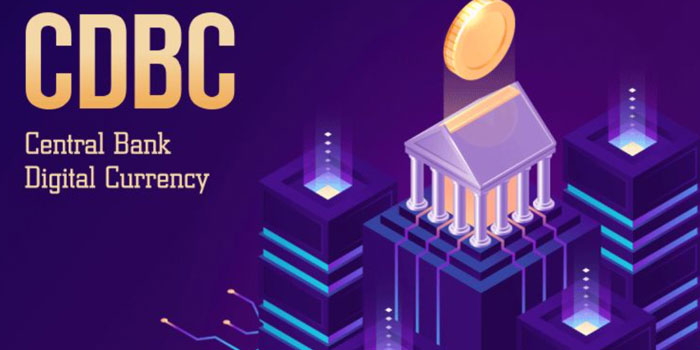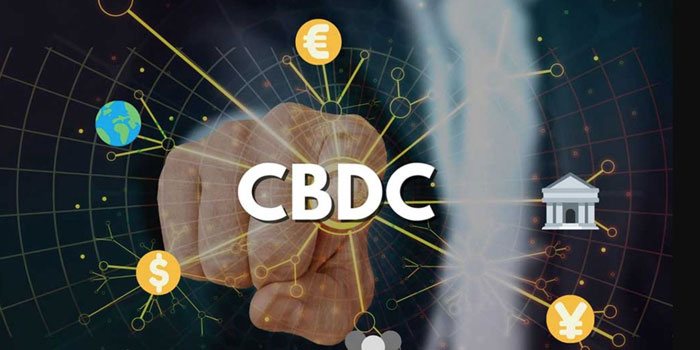Federal Reserve: Prerequisites for universal central bank digital currency (CBDC)
Si Gyeongmin
Nov 09, 2021
Clear policy goals
The interest of central banks in CBDC research and experimentation varies greatly. However, these benefits usually fall into two broad categories. Some central banks are mainly seeking to solve current challenges, while others are exploring future capabilities. For some jurisdictions, CBDC aims to solve specific problems—inefficient payment systems, weak banking infrastructure, or reduced use of cash—or to promote national policy goals such as increasing the inclusiveness of payment systems and protecting monetary sovereignty. For many advanced economies, the main motivation is focused on potential payment innovations and general preparations for potential future states.
For the United States, no matter what the specific goals of CBDC are, they should be consistent with the Fed's long-term goals, namely, the security and efficiency of the national payment system, as well as currency and financial stability. CBDC arrangements must be consistent with these goals, which have guided the Federal Reserve since its establishment in 1913. The three basic principles recently outlined by the Bank of Canada, European Central Bank, Bank of Japan, Sveriges Riksbank, Swiss National Bank, Bank of England, and Federal Reserve should complement these goals: "do not cause harm," supplement existing forms of currency, and support innovation and efficiency. The CBDC arrangement should also support the Fed’s broader work on consumer protection and community development.

Support from a wide range of stakeholders
The development of CBDC requires the input, participation, and support of a series of stakeholders from the public and private sectors, and makes a significant contribution to market preparation. Although it is impossible for stakeholders to reach a full agreement, inclusive discussions, and general consensus are a prerequisite. The main stakeholders include government agencies, end users, financial institutions, technology and infrastructure providers, academia, and standards development organizations. Considering the different interests involved and the number of complex decisions that need to be made in system design and ecosystem development, the support of a wide range of stakeholders will take time to realize.
Government agency. Government support is essential to the legal and social changes required to introduce CBDC. The legislative and executive branches of the government will need to make important decisions that affect the design and implementation of CBDC. For example, Congress must consider some key areas, such as the Federal Reserve's authority to issue general-purpose CBDCs, possible major changes in the relationship between the central bank and the public, and potential legislative changes related to contract law, privacy rights, and consumer protection. On some design and implementation issues, including issues related to taxation, public expenditure, forgery and fraud, anti-money laundering, and cybersecurity, federal agencies are also required to provide administrative support. Coordinating and unifying the management framework of various jurisdictions also requires the support of the federal and state governments.

End user. Usability will be the key, because a general-purpose CBDC must be designed for people and organizations that use the currency to buy goods and services. In the design and testing of CBDC, including end users of different ages, geographic locations, payment habits, and financial knowledge, can help strengthen the basic characteristics of feasible CBDC arrangements. For example, how will people use CBDC-through smart cards, smartphones, fingerprints, iris scans, or other things? Why would they choose CBDC instead of other payment tools? In order for CBDC to be attractive to merchants, its designers will need to consider the benefits of using CBDC in retail transactions. This may include offering cheaper and faster options.
Contact with individuals and businesses, and consult with consumer groups, community organizations, and business associations to understand the use cases of CBDC, which will help decide whether to release CBDC and its potential design. The privacy and usability concerns of end users are particularly important when designing a CBDC. Issues related to privacy will include determining the type of information stored in the system, who owns the information, who has access to it, and how it is used. According to the design of the system, the safety consideration of the end user is also very important. For example, when considering the possible trade-offs between consumer protection and loss allocation, how much responsibility does the end user want to bear?

In addition, although current payment systems are effective for most people, CBDC can help address unmet needs. According to a 2019 Federal Deposit Insurance Corporation report, 5.4% of U.S. households have neither savings nor checking accounts, which means they may not be able to directly use the bank intermediary payment system. A recent report by the Federal Reserve Bank of Atlanta pointed out that "through digital payment tools, not relying on traditional bank accounts" may be an effective way to solve the payment needs of groups that do not enjoy banking services. Reaching out to end users or representatives of Americans who do not have banking services can help determine whether and how CBDC can be used to support the inclusive goals of payments.
Financial institutions. The introduction of CBDC may lead to major changes in market structure and dynamics. There are some important questions about the potential role of banks and other financial institutions in CBDC applications. CBDC may affect commercial bank deposits, bank credit, and the broader financial system. However, it is also possible that there will be little damage to the banking industry, depending on the characteristics of the CBDC and how it is implemented. Extensive cooperation with various types of financial institutions, from global systemically important banks to local community banks, to banks that only support the Internet, will provide feedback to decision-makers on potential impacts, benefits, design considerations, and policy requirements.

Technology and infrastructure providers. Technology and infrastructure companies play an important role in today's market, and support from these groups is a prerequisite for the issuance of CBDC. Potential CBDC may come in many different forms, some of which can be realized through existing technology and infrastructure. Or, it can use new technologies, such as distributed ledgers, which are not currently in widespread use. Or, it can use a combination of existing technology and new technology. The CBDC agreement may also allow or accelerate the entry of new providers such as large technology companies (Bigtech) and financial technology companies (Fintech) into the field of payment or other financial services. Existing companies that are unable or unwilling to accept or develop new capabilities may be negatively affected when new entrants appear. Understanding these dynamics will help design choices and help resolve issues such as CBDC design, interoperability, market structure, and market adoption.
Other organizations. Other stakeholders, such as academic institutions, think tanks, standards organizations, and the international community, can provide information and support for CBDC. Academic institutions and think tanks can provide ideological guidance for decision-making. Standards organizations can contribute by defining terminology, developing taxonomy, and creating specifications and standards that support the wider ecosystem. Considering the role of the U.S. dollar in international trade and finance, as well as the opportunity to learn from CBDC pilots or initiatives in different jurisdictions, the international community, such as other central banks and policymakers, are also important. Other issues include how visitors and foreign companies use CBDC, how to use it overseas, and what rules should be established to govern such use.

Strong legal framework
The Fed’s main role in the US financial system is to maintain public confidence in the currency; therefore, a sound legal framework is a key prerequisite. It serves as the cornerstone to make the general CBDC and the wider users of the market believe that the transfer value of the tools they use is robust and reliable, the functions are convenient and safe, there are clear rules and the protection of payment recipients and consumers. Any defect will weaken the public's trust in CBDC. To establish such a sound legal framework, the critical first step involves formulating a clear position on the legal issues highlighted below.
Clear legal authority. The first thing to consider is whether the issuance of a general-purpose CBDC is consistent with the Federal Reserve's authorization, functions, and powers stipulated in the Central Bank Act (i.e. the Federal Reserve Act). The central bank only exercises the powers and functions authorized by the Federal Reserve Act. For example, the Federal Reserve Act authorizes the Federal Reserve Bank to issue Federal Reserve Notes and provide payment services to depository institutions and certain other entities. What needs to be considered is whether the issuance of a general CBDC requires additional amendments to the Federal Reserve Act.

Legal tender status. The issue of legal tender status is often raised in the context of CBDC. In the United States, this status has special significance. According to the law, all currencies issued by the Federal Reserve are effective and legal payment methods for repaying "debts" to creditors. It is worth noting that neither the Act nor any other federal law compels individuals or private businesses to accept currency or coins as payment for goods and services. On the contrary, these private sector entities are usually within the scope of any applicable state law and, with proper notice, are free to formulate their own policies on whether to accept cash. Although the status of CBDC as legal tender under U.S. law is still an open question, the recognition of a universal CBDC as legal tender does not guarantee its commercial acceptance. This largely depends on the credibility of CBDC, Including the soundness of the legal framework that supports it.
Anti-money laundering, combating the financing of terrorism, and dealing with evasion of sanctions. As a prerequisite, this legal framework must include measures to combat money laundering and the financing of terrorism to reduce the risk that CBDC may become a favorable medium for illegal activities, especially considering that potentially large amounts of funds can be transferred easily and quickly. As a comparison, illegal activities related to virtual currency are not limited to direct use of crime or support for terrorism in transactions, but also include bad actors hiding illegal gains or financial activities from administrative authorities.

Privacy. At the same time, it is also important to consider how to respect privacy and how to protect personal data in the CBDC agreement. The legal requirements are different, depending on the role that a particular party plays in processing payment transactions, whether that party is a bank, a bank’s service provider, an affiliate, or a communications provider. According to the design of the CBDC and the central bank’s role in the arrangement, the central bank can obtain an unprecedented scale of finer-grained transaction information; transaction data may be available to certain third parties (such as banks and service providers), or in extreme cases, available to everyone. This close connection between currency and data is in stark contrast to physical banknotes. Physical banknotes do not imply transaction data related to specific individuals and their financial transaction history.
Legal roles and responsibilities. In addition, a general CBDC may require the central bank to assume the roles and responsibilities related to the public, and these roles and responsibilities are now usually borne by private banks to their customers. Therefore, it will become crucial to resolve the issues related to the risks that the central bank manages in accordance with applicable laws, including a series of central bank-related legal responsibilities that may be allocated to the central bank.
In addition, the legal framework should fairly distribute losses in the event of problems, such as errors or delays, fraud, theft or operational failures such as bankruptcy and insolvency, and be clear and predictable to strengthen public trust in CBDC and the market confidence.

Powerful technology
Technology will affect the design and function of digital currency to a certain extent. In some cases, the business and operational requirements of a particular CBDC design may require the development of new technologies. For example, national CBDC arrangements based on distributed ledger technology require further development, such as the ability to increase transaction throughput in consideration of the size of the US economy. In addition, access or integration points (such as digital wallets) may require additional development to meet operating standards. For example, a CBDC that can be operated offline may require the use of other technologies, such as secure hardware. Important technology development and evaluation work need to be in three core areas: system integrity, operational robustness, and operational resilience.
Market preparation
Market preparation refers to the right time to introduce CBDC. CBDC should have end users (demand) willing to adopt it, and there must be an ecosystem (supply) ready to support it. Assessing market readiness usually requires understanding the conditions that may support or promote the adoption of CBDC, and whether the components of the system are ready and effectively coordinated. Although the real market preparation time may be unpredictable, activities such as surveys, interviews, focus groups, and testing with a wide range of stakeholders can help determine market progress. The forces driving change must effectively overcome the inertia of the status quo. These or other factors may be indicators of increasing or decreasing market readiness.

Obvious needs. The demand for CBDC may come from economic or policy interests, or it may come from both at the same time. But no matter what drives the issuance of CBDC, individuals and businesses should be willing to accept a new payment tool among the growing number of payment options. Without the basic characteristics of availability, market acceptance may be limited. Consumers cited several reasons when choosing a particular payment method; they noticed factors such as convenience, speed, economic stimulus, and safety. Even if a new product, such as contactless payment, can be improved on the basis of existing payment methods, the acceptance may still be low.
Perhaps the most important driver of business needs is that companies accept the payment methods that customers want to use. Most companies prefer fast and low-cost payment methods. However, this preference may vary by implementation and organization. Some companies may only accept cash, while others may have a cashless policy. For business-to-business payments, electronic payment preferences are often expressed, although it may depend on the scale of the operation or other variables. Some retail companies also hope to reduce or eliminate cash to reduce processing costs and increase transaction speed. However, a research report by the Federal Reserve Bank of San Francisco emphasized that this may be at the expense of financial inclusion and other costs including credit card network fees.

Obvious supply. Turning to the "supply" aspect of market preparation, the ecosystem structure, hardware infrastructure, and market participants must be prepared to accept CBDC. The CBDC ecosystem includes many functions, such as publishing, distribution, storage, use, customer service, reporting, monitoring, and maintenance. In order to meet market expectations, it is necessary to establish a new payment track, or upgrade or change the traditional payment track. It is not an easy task to establish a new payment technology or even modify an existing technology. According to the design arrangement, the necessary investment may discourage some companies. Even today, the ability to make contactless payments using credit cards or QR codes is not universal in the United States.
In order to ensure an obvious supply, activities and communication between all parties must be coordinated. Coordination activities include establishing standards and upgrading the capabilities and processes of various elements of the system to incorporate new technical features, functions, and enhance safety. Both individuals and businesses need operational guidance to understand how the system will work and what they need to do to use it. Communication between market participants is equally important. Individuals, companies, banks, payment service operators, central banks, etc. all need to have a clear understanding of the rights and responsibilities of all parties involved. Currency is a social and legal contract, which must be fully understood and agreed upon by users.







